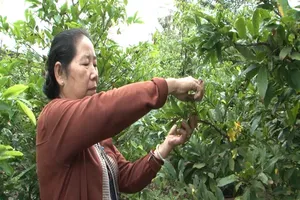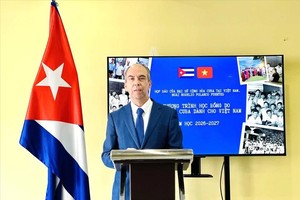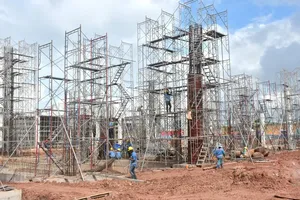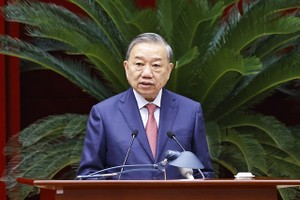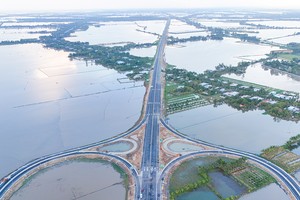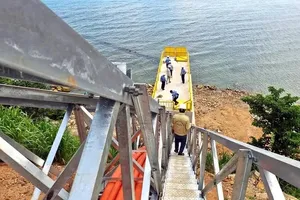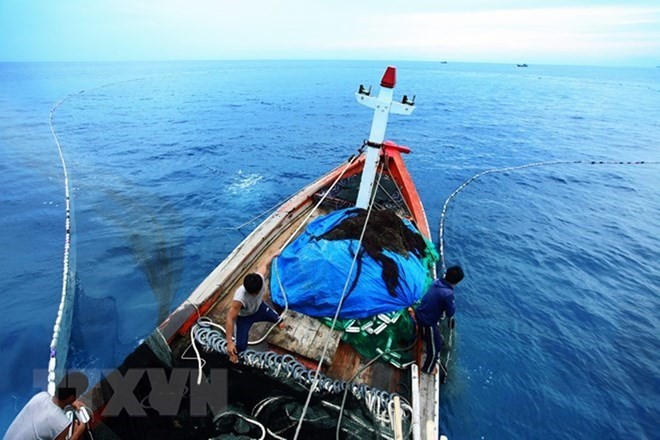
Mass fish deaths were first reported on April 6, 2016 when a large number of fish were washed ashore in Ha Tinh province. The phenomenon also occurred in nearby Quang Binh, Quang Tri and Thua Thien-Hue provinces.
About 70 tonnes of dead fish were found in the four provinces. The pollution affected more than 260,000 people who earned their living from the sea.
In late June 2016, Taiwan-invested Hung Nghiep Formosa Ha Tinh Steel Co. Ltd admitted responsibility for the environmental incident and pledged to compensate 500 million USD (11.5 trillion VND) for affected people.
So far, Quang Binh has disbursed nearly 2.8 trillion VND or 99.7 percent of its compensatory payment to affected people.
It has stepped up social welfare policies and helped locals resume their work by helping more than 100,000 people buy health insurance, reducing tuition fees for children of affected families, assisting local residents to seek jobs and cutting down interest rates or rescheduling loan terms for those affected by the pollution.
With the support of local authorities, fishermen have built and upgraded vessels to continue fishing activities while aquaculture has also been expanded.
In 2017, Quang Binh posted nearly 60,000 tonnes of aquatic catch and nearly 11,700 tonnes of aquaculture output, up 18.5 percent and 0.7 percent from the previous year. The figures continued to increase in the first months of 2018 compared to the same period of 2017.
Meanwhile, tourism has bounced back after the marine pollution triggered a recession in this spearhead industry of Quang Binh. The province welcomed more than 3.3 million arrivals last year, surging by more than 70 percent from 2016.
Since the beginning of 2018, visitor numbers to Quang Binh, home to a 116km-long coastline and the Phong Nha-Ke Bang National Park, have risen by 15 – 20 percent from a year earlier.
Le Van Bao, Chairman of the People’s Committee of Le Thuy district, said Le Thuy was one of seven district-level localities of Quang Binh impacted by the pollution. Tens of thousands of local households faced hardships because of the incident.
He noted thanks to the assistance of central agencies and local authorities, they have overcome difficulties and stabilised their lives. Fishermen have boosted fishing activities in offshore waters. Some have also gained successes when switching their jobs to farming quails on sand, blotched snakehead and poultry and cultivating vegetables.
Quang Binh is accelerating the compensation payment, settlement of complaints and denunciations relating to the compensation, as well as social welfare and support policies. It is also building and upgrading fisheries infrastructure while working to recover the marine environment and fisheries resources, said Vice Chairman of the provincial People’s Committee Le Minh Ngan.
All of these activities are meant to help residents stabilise their lives and develop the local economy, he added.
About 70 tonnes of dead fish were found in the four provinces. The pollution affected more than 260,000 people who earned their living from the sea.
In late June 2016, Taiwan-invested Hung Nghiep Formosa Ha Tinh Steel Co. Ltd admitted responsibility for the environmental incident and pledged to compensate 500 million USD (11.5 trillion VND) for affected people.
So far, Quang Binh has disbursed nearly 2.8 trillion VND or 99.7 percent of its compensatory payment to affected people.
It has stepped up social welfare policies and helped locals resume their work by helping more than 100,000 people buy health insurance, reducing tuition fees for children of affected families, assisting local residents to seek jobs and cutting down interest rates or rescheduling loan terms for those affected by the pollution.
With the support of local authorities, fishermen have built and upgraded vessels to continue fishing activities while aquaculture has also been expanded.
In 2017, Quang Binh posted nearly 60,000 tonnes of aquatic catch and nearly 11,700 tonnes of aquaculture output, up 18.5 percent and 0.7 percent from the previous year. The figures continued to increase in the first months of 2018 compared to the same period of 2017.
Meanwhile, tourism has bounced back after the marine pollution triggered a recession in this spearhead industry of Quang Binh. The province welcomed more than 3.3 million arrivals last year, surging by more than 70 percent from 2016.
Since the beginning of 2018, visitor numbers to Quang Binh, home to a 116km-long coastline and the Phong Nha-Ke Bang National Park, have risen by 15 – 20 percent from a year earlier.
Le Van Bao, Chairman of the People’s Committee of Le Thuy district, said Le Thuy was one of seven district-level localities of Quang Binh impacted by the pollution. Tens of thousands of local households faced hardships because of the incident.
He noted thanks to the assistance of central agencies and local authorities, they have overcome difficulties and stabilised their lives. Fishermen have boosted fishing activities in offshore waters. Some have also gained successes when switching their jobs to farming quails on sand, blotched snakehead and poultry and cultivating vegetables.
Quang Binh is accelerating the compensation payment, settlement of complaints and denunciations relating to the compensation, as well as social welfare and support policies. It is also building and upgrading fisheries infrastructure while working to recover the marine environment and fisheries resources, said Vice Chairman of the provincial People’s Committee Le Minh Ngan.
All of these activities are meant to help residents stabilise their lives and develop the local economy, he added.


